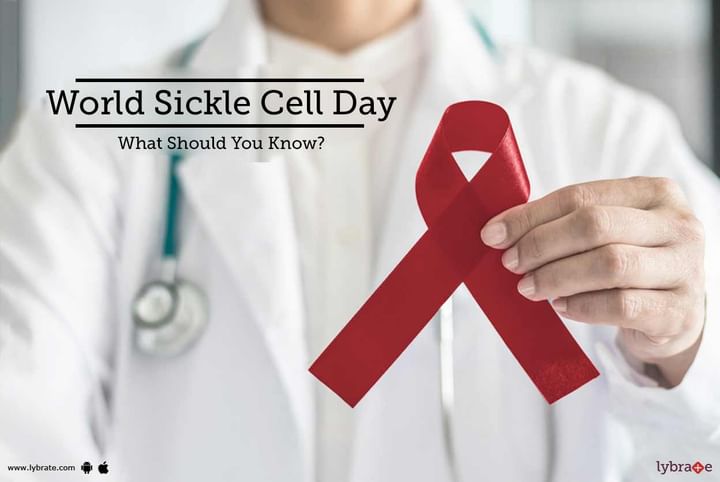World Sickle Cell Day - What Should You Know?
World Sickle Cell Day is observed each year on June 19th to raise the public awareness regarding this disease and its treatment methods. Sickle Cell disease is an inherited transmitted deformity/abnormality of haemoglobin. It is an inherited form of anaemia. This abnormality generates changes in the shape of red blood cells from round to crescent, which reduces the oxygen carrying capacity and slows down the flow of blood to various parts of the body.
Generally, red blood vessels are round and flexible, passing easily through the blood vessels. The red blood cells become sticky and rigid in sickle cell anaemia. Sickle cells last 10 to 20 days, which causes anaemia because of the disorder of red blood cells, while healthy red blood cells could live up to 120 days.
Millions of people around the world are affected by Sickle Cell Anemia. There is no specific cure for this disease as Sickle cell anaemia is not contagious, it is hereditary. Sickle cell anaemia is named so for the reason that red blood cells are crescent-shaped or sickle-shaped, and anaemia signifies lack of blood. There is a difference between iron-deficiency anaemia and sickle cell anaemia.
Symptoms
Sickle Cell Disease (SCD) has many symptoms which includes: serious anemia, episodes of suffering, additionally a range of complications, heart failure, dizziness, chronic kidney disease (CKD), acute chest syndrome (ACS), chest pain, gallstones, pulmonary hypertension, immune deficiency, paralysis or stroke, splenomegaly, joint damage mainly in the hip joint, foot ulcers, delayed puberty, retinopathy, and endocrine disorders.
Diagnosis
Sickle Cell Disease is diagnosed by blood tests.
Treatment
Bone marrow transplant or stem cell transplant in patients usually below the age of sixteen is the only available cure for the disease.
Aim of the World Sickle Cell Day
The aim of the World Sickle Cell Day is to support and promote research for the patients in order to help them upgrade their overall quality of life to the maximum possible extent. It also aspires to increase awareness for sickle cell disease disorder in the general public so that they know how to deal with patients suffering from the disease. Moreover, the World Sickle Cell Day has the objective of raising awareness of the importance among generations of pre-marital screening to lessen the transmission of Sickle Cell Disease.
Target Groups for Awareness Programs
Though it is desirable that everybody knows about Sickle Cell Disease, the target groups for the awareness programs include health decision-makers, sickle cell anaemia sufferers and their families, health organizations and associations, people who are planning to get married, and the health workers including health educators, physicians, and nurses.
On the World Sickle Cell Day, different societies provide advocacy, information, and advice for raising awareness. They also provide educational and welfare grants, support services, annual children’s holiday, home help, hospital visits, mentoring and befriending through holding talks, assisting into research and training, lobbying for better service provision, patient education seminars, and campaigning.



+1.svg)
